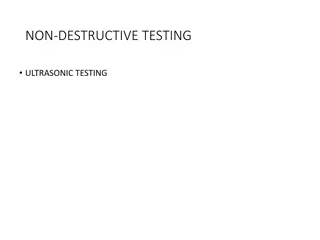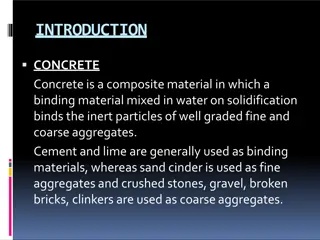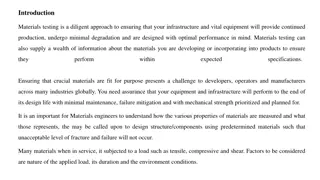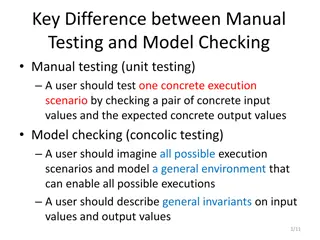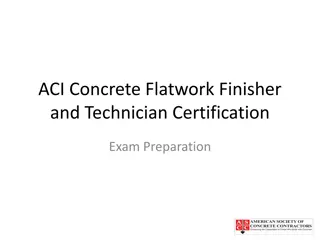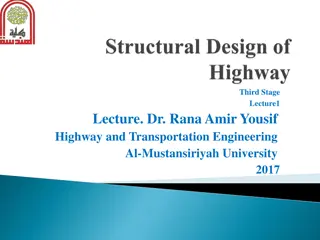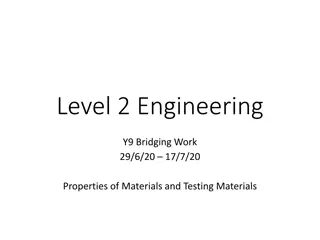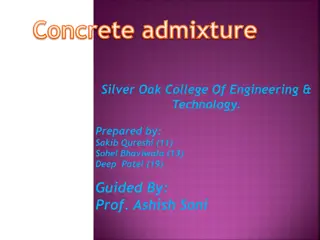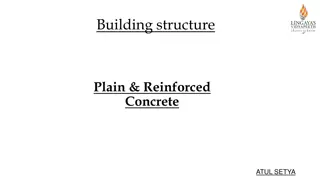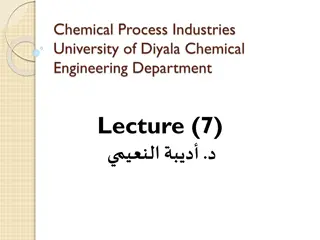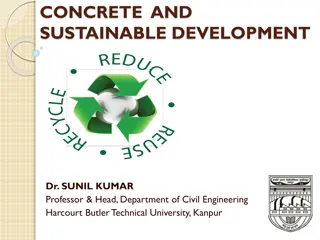Importance of Non-Destructive Testing in Concrete Structures
Non-destructive testing (NDT) of concrete plays a crucial role in assessing the strength, durability, and quality control of structures. This method involves assessing properties such as density, strength, crack depth, and reinforcement location without damaging the concrete. NDT is essential for verifying material compliance, monitoring strength development, detecting defects, and confirming structural integrity. Skilled interpretation of test results is crucial for effective implementation of NDT in both old and new concrete structures.
Download Presentation

Please find below an Image/Link to download the presentation.
The content on the website is provided AS IS for your information and personal use only. It may not be sold, licensed, or shared on other websites without obtaining consent from the author.If you encounter any issues during the download, it is possible that the publisher has removed the file from their server.
You are allowed to download the files provided on this website for personal or commercial use, subject to the condition that they are used lawfully. All files are the property of their respective owners.
The content on the website is provided AS IS for your information and personal use only. It may not be sold, licensed, or shared on other websites without obtaining consent from the author.
E N D
Presentation Transcript
NON-DESTRUCTIVE TESTING OF CONCRETE (NDT ON CONCRETE) Non destructive test is a method of testing existing concrete structures to assess the strength and durability of concrete structure. In the non destructive method of testing, without loading the specimen to failure (i.e. without destructing the concrete) we can measure strength of concrete. Now days this method has become a part of quality control process. This method of testing also helps us to investigate crack depth, micro cracks and deterioration of concrete. Non destructive testing of concrete is a very simple method of testing but it requires skilled and experienced persons having some special knowledge to interpret and analyze test results.
IMPORTANCE AND NEED OF NON-DESTRUCTIVE TESTING It is often necessary to test concrete structures after the concrete has hardened to determine whether the structure is suitable for its designed use. The range of properties that can be assessed using non-destructive tests is quite large and includes such fundamental parameters as density, elastic modulus and strength as well as surface hardness and surface absorption, and reinforcement location, size and distance from the surface. Non-destructive testing can be applied to both old and new structures. Typical situations where non-destructive testing may be useful are, as follows:
Quality control of pre-cast units or construction in situ Removing uncertainties about the acceptability of the material supplied owing to apparent non-compliance with specification Confirming or negating doubt concerning the workmanship involved in batching, mixing, placing, compacting or curing of concrete Monitoring of strength development in relation to formwork removal, cessation of curing, prestressing, load application or similar purpose Location and determination of the extent of cracks, voids and similar defects within a concrete structure Determining the concrete uniformity, possibly preliminary to core cutting, load testing or other more expensive or disruptive tests
Determining the position, quantity or condition of reinforcement Increasing the confidence level of a smaller number of destructive tests Determining the extent of concrete variability in order to help in the selection of sample locations representative of the quality to be assessed Confirming or locating suspected deterioration of concrete resulting from such factors as overloading, fatigue, external or internal chemical attack or change, fire, explosion, environmental effects
SCHMIDT REBOUND HAMMER TEST FUNDAMENTALPRINCIPLE The Schmidt rebound hammer is principally a surface hardness tester. It works on the principle that the rebound of an elastic mass depends on the hardness of the surface against which the mass impinges. There is little apparent theoretical relationship between the strength of concrete and the rebound number of the hammer. However, within limits, empirical correlations have been established between strength properties and the rebound number.





